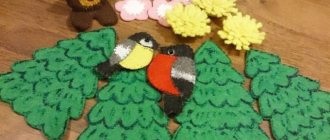Migratory and wintering birds
Observing birds throughout the year, you will notice that some disappear in the fall and appear in the spring, while others are present throughout the year. Based on this feature, birds are divided into migratory and wintering birds.
- Migratory birds fly to warmer regions in late summer or early autumn. Cold nights and shortening daylight hours encourage them to migrate. Insects hide or die; the inhabitants of reservoirs are protected by ice. Hungry time is coming for the birds.
Most migratory birds winter in Africa, South Asia or southern Europe.
The cuckoo is a migratory bird, but precise data on wintering areas is not available due to its secrecy. Presumably, most of the Eurasian population settles in sub-Saharan Africa. The bird is able to travel about 3.5 thousand km without rest.
Rice. 1. Common cuckoo.
- Wintering birds are divided into sedentary and nomadic.
Sedentary species most often live near people - sparrows, crows, pigeons. Some forest species do not leave the nesting site.
Winter migratory birds are nomadic species. They migrate within the boundaries of the natural zone in search of more abundant food (crossbill, bullfinch).
The most famous birds can be listed in a table, which will be useful for preschoolers and 1st grade children when preparing for a lesson on the world around them.
| Wintering species | Migratory species | |
| Sedentary | Nomadic | |
| Sparrow | Woodpecker | Stork |
| Crow | Crossbill | Crane |
| Jackdaw | Tit | Rook |
| Pigeon | Waxwing | Cuckoo |
| Magpie | Bullfinch | Martin |
| Owl | Capercaillie | Swift |
| Owl | Kedrovka | Bluethroat |
Who flies away from their homeland and why?
Migratory birds include swallows, wild geese, starlings, rooks and many others. When cold weather sets in, they fly away to where it is warm, returning back to their native places, which they left in the fall.
Why do birds leave their native lands?
Among the main reasons are cold and lack of food. Winter time is not as scary for them as a lack of food. Birds are warm-blooded creatures, their average body temperature is about 41 degrees. In addition, the down under the plumage helps prevent hypothermia. Therefore, they are able to maintain their vital functions in harsh winters, which cannot be said about their activity without a sufficient amount of food.
What do birds eat in summer?
Mainly insects. All their living prey - bugs and worms - either die with the cold or go to sleep, hiding deep in the ground. Therefore, those who do not have grain or plant roots on their menu are forced to fly to warm countries where there are many insects.
Among the inhabitants of forests and populated areas, half of the birds are migratory. Almost everything that lives in swamps and reservoirs flies to where it is warmer. So, storks and herons get ready for a long journey when ponds and rivers freeze. It is difficult to get frogs and fish out from under the ice, and small rodents have long since hidden in their burrows.
Did you know?! The rook is the last to fly away. But he is among the first to return from wintering to his native land, somewhere between March 4 and March 23. That’s why there is an expression: “Rooks have opened spring.” After them, starlings and larks fly home.
Bluethroat
The bluethroat is a sparrow-sized bird with a blue spot on its chest with a bright red edging. It is observed throughout Russia. Settles along rivers in bushes. It makes nests from blades of grass on the ground, in piles of branches. The eggs are incubated by the female and the chicks are fed by both parents. After 2 weeks, the babies leave the nest and are fed by their parents for another week.
It feeds on insects and larvae, which it collects on the ground or tree branches. In autumn, berries are added to the menu.
At the end of summer, bluethroats fly singly to Africa and South Asia.
Rice. 2. Bluethroat.
List of migratory birds
There is also a wide range of warm-blooded vertebrate animals capable of flight that leave warm regions with the onset of cold weather. Most of them are familiar to everyone, or many have seen them at least in a picture.
Stately rooks
If you read the description of this bird, it will seem that we are talking about a raven. Indeed, these birds from the corvid class are very similar to each other. But, unlike their relatives, rooks are migratory birds. In ancient times, it was the arriving rooks that symbolized the imminent arrival of spring. They fly home the very first, as soon as a small thaw appears in the snow. An interesting fact about rooks is that the birds make themselves swings from branches to relax. They can swing on a homemade swing for a long time. Rooks are unpretentious in food, but despite this, they lead a migratory lifestyle.
Cute swallows
“A swallow flies towards us with spring in the canopy” - these lines from Pleshcheev’s children’s poem were not written in vain, since this bird is another messenger of the coming spring. But swallows are still conditionally migratory birds, it all depends on what climate surrounds them in the place of settlement. From Russia, they prefer to leave their homes during cold weather, since the air in winter is too cold for small birds. Swallows differ in their behavior:
- are not afraid of people;
- They build their nests directly on houses.
If this happens, then it is considered a good omen to have a swallow’s nest under your window. But swallows are also very beautiful and fast. Their flight speed is about 120 km/h. In the summer you can observe a very funny picture: when a huge flock of chicks learns to fly, the entire sky, not high from the ground, is strewn with black dots, which every now and then fall to the ground or wires in order to rest.
Song larks
One of the most songbirds. Their trills have been spreading since the end of March. Birds are so carried away by their singing that they forget to build a nest on time, and begin this activity much later than their fellow birds. Larks are unpretentious when it comes to food, so they eat whatever they can get. It is interesting that larks build their nests in secluded places, but not in trees. Their homes can be found in the thick of bushes, in the grass, even under stones.
Melodious nightingale
Well-known singers. It is rare to meet a person who, at least once in his life, on a quiet summer evening, would not indulge in daydreaming while the nightingale sings. Against the background of the rustling of leaves and the evening sunset, their trills sound even more romantic. Their beautiful voice compensates for their modest appearance, since these birds are small with nondescript coloring . The predominant colors are:
- dark brown;
- grey;
- brown;
- black.
In winter, they fly to more southern regions of the planet.
Unlike their feathered counterparts, nightingales fly home quite late - at the end of May. By the way, the male nightingale entertains the female with his singing while she lays and incubates eggs. They are very secretive and cautious, so you rarely get to see them.
Copycat starlings
Capable of reproducing various sounds, including the meowing of a cat. Looking at the images of the starling, you can understand from its variegated color that it is a joker who fakes the voices of his relatives . Depending on their habitat, they are conditionally migratory. They fly a large number of kilometers to rest in the winter and return to their homeland in the spring.
It happens that the cold has not subsided, but the birds have already returned, then it is very difficult for them, sometimes the weakest die. Residents of warm countries are not at all very fond of starlings for their huge clusters and loud chirping. Due to their large accumulations, they often cause damage to crops and berries. But still, starlings bring more benefits for exterminating pests. People make birdhouses for them, and the birds happily hatch their eggs in them.
Long-legged stork
This is such a curious character that he even became the hero of Bianchi’s story “Who Sings What.” Externally, it is a huge bird that amazes with its majesty. Representatives of this species build large nests on the roofs of houses and water towers. Storks are monogamous and choose a mate for life. In the summer they stay in pairs, and in the winter they gather in large flocks and fly south. The amazing thing is that during the flight the bird even manages to rest a little . The sleep is not long, about 15 minutes, but it is enough to continue the long journey. Upon returning home, they return to their ancestral nests, sometimes the homes are inherited. The stork's main delicacy is frogs, which is why birds choose wetlands as places to live.
Owl
The eagle owl is the largest bird among the owls, its height is 0.6–0.8 m, its wingspan is up to 1.9 m. It is distributed throughout Eurasia, except the far north. Hunts by planning. It is a wintering sedentary species.
The plumage is motley, brown tones, loose, absorbs the sounds of flight. There are feathers sticking out on the head, like “ears”. The paws are completely covered with feathers, the claws are large. Amber eyes stand out on the facial disc. During courtship, partners call each other loudly, forming permanent pairs.
Thanks to the special structure of the spine, the eagle owl's head can even turn backwards.
Hunts in the evening all night. It feeds on rodents, hares, birds, frogs, and fish.
Nests are located on the ground, in the roots of trees, among brushwood. The female incubates, the male feeds her and the chicks. The chicks are covered with down and blind. At 2 months they begin to fly, at 3–4 months they leave their parents.
Rice. 3. Eagle owl.
To which countries do migratory birds fly?
Many of them love Africa. Birds even fly there from the Arctic and Siberia. Most waterfowl, such as ducks and swans, winter in western Europe. From Russia, blackbirds and starlings move to the French or Spanish south, but cranes are lovers of the banks of the river called the Nile. Among the long-distance marathon runners are windbreakers from Eastern Siberia. They chose the shores of New Zealand for wintering.
However, among migratory birds there are patriots who move within our country closer to the warm domestic south. Among them are the hooded crow and the black rook.
Did you know?! Some species of ducks called “mallards” cross more than one country on their way to their wintering grounds. They fly over Belarus, Ukraine, through Germany and Holland, through Denmark and Great Britain, as well as across northern Italy and, ultimately, stop in western Europe.






